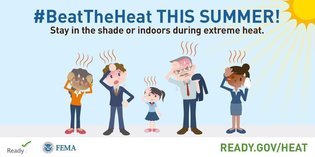You are sound asleep at 2 a.m. The weather radio alarms for a tornado warning. The warning reads this is a "radar indicated" storm.
Outside ... you went outside? ... the wind is breezy and, in the distance, there's a thunderhead with lightning.
As you stagger back to bed, grumbling what the Weather Service was thinking that caused your loss of sleep, realize there is a better way.
At two AM, surely there was someone awake upstream of the warning area. Were there any reports of funnels or tornadoes or wind damage or hail? Why were those reports not getting to the weather service? Were there no reports? Now the weather service has to rely on radar but a trained spotter report takes away or adds to the nature of the warning.
There are so many ways to get a report to the National Weather Service. CALL them. There number is listed on every Weather Forecast Office. Locate your WFO by going to
Weather.GOV and typing your zip code in the search box.
When you found your local weather page, look for "your local forecast office is" and click that link. There Skywarn and Weather Ready Nation efforts, along with the phone number is found there.
Ask them how they want Citizens to report. Most will accept a phone call.
When you see hail, damaging wind, flood, ice storms, etc., CALL the local office.
They also follow on Twitter and Facebook a lot. Tag them in your post. @NWSTulsa, for example, is the Tulsa NWS office on Twitter and Facebook. How selfish is it of you to tag your friends while disregarding the place that can give the warning to your friends and your neighbors?
Hashtags are also a good way to use social media. #XXwx where XX is the two letter identifier for your State, ex. KSwx
Photos also tell a thousand words. That hail stone looks great next to a ruler or a quarter.
Be part of your community. Report your weather to the NWS and your local emergency manager. Maybe we can all get a good rest if there are fewer radar indicated storms, maybe.




